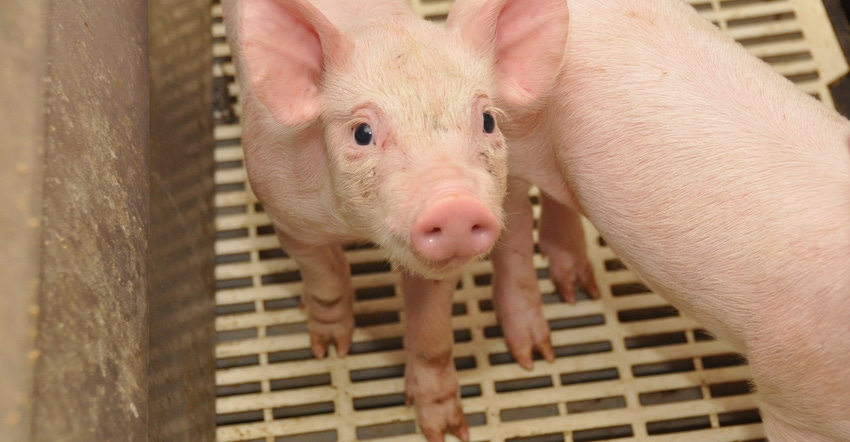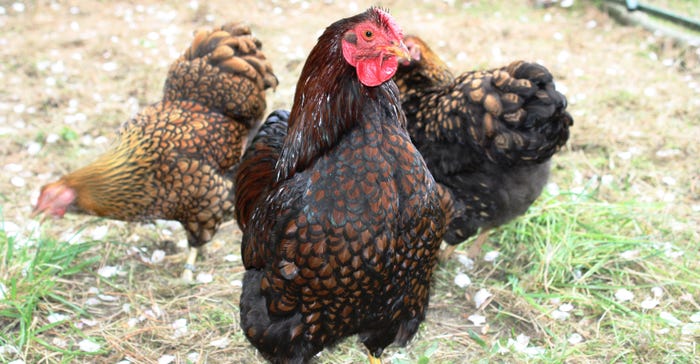
Should USDA rules for organic meat production include animal welfare specifications? And should those rules be based on science or consumer perception?
Those are the key questions surrounding a new Organic Livestock and Poultry Practices Final Rule, which has come up for public comment for a second time, says Jim Monroe, National Pork Producers Council communications director. Livestock producers and industry groups have another chance to plead their case after USDA delayed the effective date for the rule.
The regulations outline specific space requirements, both indoors and outdoors, and when animals can be housed indoors. The rule prohibits physical alterations such as debeaking and docking tails. Living conditions would include proper ventilation and limited artificial light.
The rules sound similar to the Humane Society of the United States state referendums, says Janeen Johnson, an animal welfare professor at the University of Illinois. She adds that current USDA organic regulations already address several of these guidelines, including proper ventilation and the ability to graze on a pasture. Organic, by the original definition, means animals are fed 100% organic feed and forage, and no antibiotics or hormones.
“It seems like they’re trying to add organic to this whole space issue,” she explains. “I think this is a new way activists are getting around state-by-state referendums.”
Dan Kovich, NPPC deputy director of science and technology, says the NPPC is strongly against the new rules for two reasons: They lack scientific reasoning, and they fall outside the scope of the Organic Food Production Act of 1990, which outlines organic practices through food and medicine.
Perception vs. reality
The new rules have nothing to do with “organic” production, Johnson explains, nor do the specifications lead to healthier animals.
“You’re saying there’s higher welfare standards for organic — that’s what this bill is saying,” Johnson says. The law implies that organic farmers are better stewards of animal welfare. “That’s offensive to producers,” she adds. “It’s not always in the best interest of your animal to give them access to the outdoors.”
Animals with outside access may get sick from predator encounters or exposure to disease. Then what, Johnson asks? Pork and poultry marketed as “organic” can’t be treated with antibiotics.
“This is where veterinarians become concerned because you’re not fulfilling your obligation to the animal,” she explains.
There’s a problem with perception versus reality, Kovich says, and people’s expectations when they read or hear the word “organic.”
“The rule appeals to the public — what they think is good — without any scientific justification for a lot of what they are proposing,” he adds. “This is like saying all farmers need to wear bib overalls and have barns painted red. It refers to a perception of what good welfare is, rather than base it on any science as to what actually does provide measurable differences in animal welfare.”

MORE HARM THAN GOOD: “There’s a place for organic and the people who want that niche,” says Janeen Johnson, an animal welfare professor at the University of Illinois. “This puts animals and the public at risk. It’s not as black and white as they want to make it.”
Food safety in jeopardy
Food safety concerns like trichinosis, a disease almost eliminated from commercial swine production, could quickly return once pigs root around outside, Kovich explains. “It puts pork in a bad position,” he adds. “It opens the door for disease.”
Production best practices that allow farmers to make the right animal welfare decisions for their operation are already established by the pork and poultry industries. The proposed organic rule restricts a handful of specific areas while the Pork Quality Assurance Program encompasses several best practices, from ventilation to biosecurity.
“Hog producers already do things with animal welfare in mind,” Kovich explains. “It’s a really important part of what we do.”
What’s next for the rule?
Johnson speculates the Trump administration approval delays may have impacted the effective date. Kovich believes USDA needs time to regroup after dealing with the avian influenza outbreak for two years.
“I’m not surprised USDA delayed it to reconsider the ramifications of putting hundreds of thousands of birds outside, where the exposure is astronomically higher,” he explains. “That can’t be ignored; there’s a real risk out there.”
Monroe says USDA has until Nov. 14 to review the proposed guidelines and then make the final call: Withdraw, implement or modify the rule.
About the Author(s)
You May Also Like




